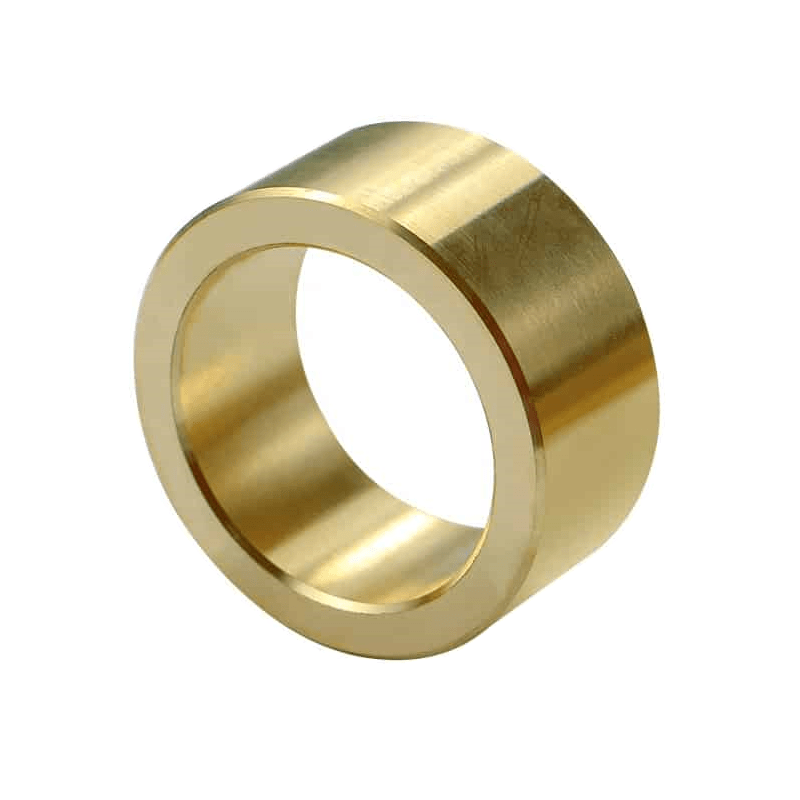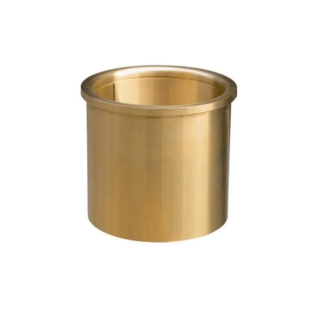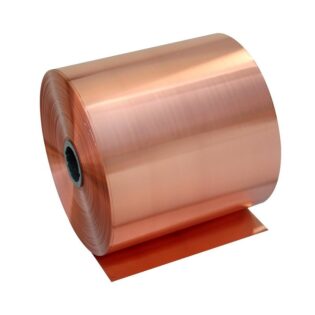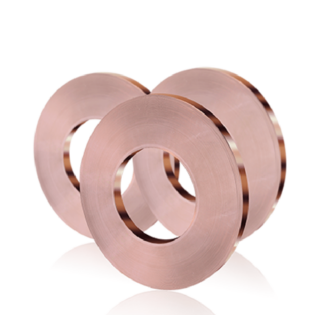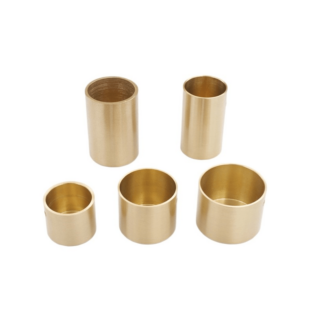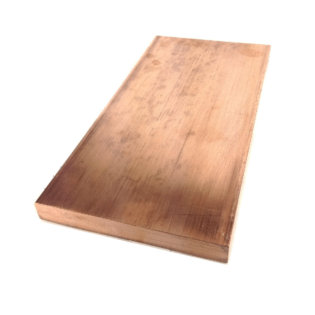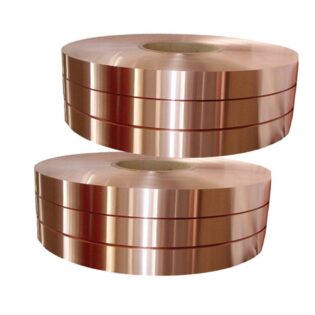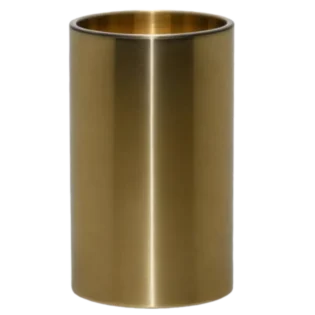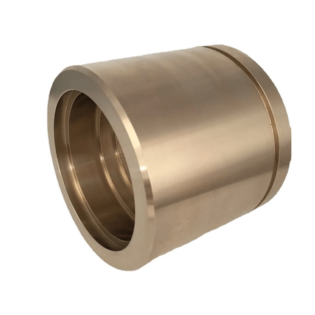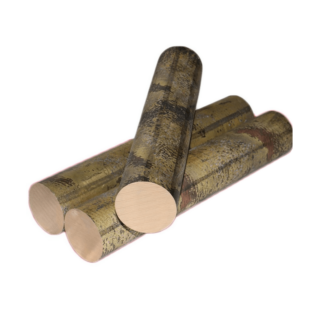C54400 performance features:
C54400 copper alloy has the following performance characteristics:
- Excellent corrosion resistance: C54400 copper alloy has good corrosion resistance in seawater, atmosphere, acid, alkali and other environments, especially in seawater.
- High strength: After heat treatment, C54400 copper alloy has the characteristics of high strength and high hardness, and is suitable for manufacturing high-load parts.
- Good electrical conductivity: C54400 copper alloy has good electrical conductivity and can be widely used in the field of electrical equipment manufacturing.
- Good processing performance: C54400 copper alloy has good cutting performance and is suitable for various precision processing occasions.
C54400 Continuous cast and drawn
Phosphor bronze C54400 contains copper, tin, and phosphorus. Phosphorus increases the wear resistance and stiffness of the alloy. Tin increases the corrosion resistance and strength of the alloy. Lead, zinc, and iron are other named elements. Phosphor bronze alloys are notable for their toughness, strength, good conductivity, and low coefficient of friction.
C544 also designated as as CuSn4Zn4Pb4 and CW456K.
In addition to C54400, Concast offers phosphor bronze alloys C51000, C52100, and C53400. Concast is the only domestic producer of phosphor bronze.
Typical uses
Electrical: electrical connectors
Industrial: bearings, bushings, gears, pinions, screw machine products, shafts, sleeve bearings, thrust bearings, thrust washers, valve parts
Similar or equivalent specification
| CDA | ASTM | SAE | AMS | Federal | Military | Other |
|---|---|---|---|---|---|---|
| C54400 | B139 B139M | J461 J463 |
Chemical composition
| Cu% | Pb% | Sn% | Zn% | Fe% | P% | ||||||
|---|---|---|---|---|---|---|---|---|---|---|---|
Chemical composition according to ASTM B139/B139M-12(2017) Note: Cu + sum of named elements, 99.5% min. Single values represent maximums. | |||||||||||
| Rem. | 3.00- 4.00 | 3.50- 4.50 | 1.50- 4.50 | 0.10 | 0.01- 0.50 | ||||||
Machinability
| Copper alloy UNS No. | Machinability rating | Density (lb/in3 at 68 °F) |
|---|---|---|
| C54400 | 80 | 0.320 |
Mechanical properties
C54400
H04 hard
Size range: over 1/16″ to 1/4″ round and hexagonal inclusive
| Tensile strength, min | Yield strength, at 0.5% extension under load, min | Elongation, 4x Diameter or Specimen Thickness, min | Rockwell “B” hardness | Remarks | ||
|---|---|---|---|---|---|---|
| ksi | MPa | ksi | MPa | % | typical HRB | |
| 65 | 450 | 8 | 86 | |||
Size range: over 1/4″ to 1/2″ round and hexagonal inclusive
| Tensile strength, min | Yield strength, at 0.5% extension under load, min | Elongation, 4x Diameter or Specimen Thickness, min | Rockwell “B” hardness | Remarks | ||
|---|---|---|---|---|---|---|
| ksi | MPa | ksi | MPa | % | typical HRB | |
| 60 | 415 | 10 | 86 | |||
Size range: over 1/2″ to 1″ round and hexagonal inclusive
| Tensile strength, min | Yield strength, at 0.5% extension under load, min | Elongation, 4x Diameter or Specimen Thickness, min | Rockwell “B” hardness | Remarks | ||
|---|---|---|---|---|---|---|
| ksi | MPa | ksi | MPa | % | typical HRB | |
| 55 | 380 | 12 | 86 | |||
Size range: over 1″ round and hexagonal
| Tensile strength, min | Yield strength, at 0.5% extension under load, min | Elongation, 4x Diameter or Specimen Thickness, min | Rockwell “B” hardness | Remarks | ||
|---|---|---|---|---|---|---|
| ksi | MPa | ksi | MPa | % | typical HRB | |
| 50 | 345 | 15 | 86 | |||
Physical properties
Physical properties provided by CDA | |||||||||||
| US Customary | Metric | ||||||||||
|---|---|---|---|---|---|---|---|---|---|---|---|
| Melting point – liquidus | 1830 °F | 999 °C | |||||||||
| Melting point – solidus | 1700 °F | 927 °C | |||||||||
| Density | 0.320 lb/in3 at 68 °F | 8.89 gm/cm3 at 20 °C | |||||||||
| Specific gravity | 8.89 | 8.89 | |||||||||
| Electrical conductivity | 19% IACS at 68 °F | 0.111 MegaSiemens/cm at 20 °C | |||||||||
| Thermal conductivity | 50 Btu/sq ft/ft hr/°F at 68 °F | 86.5 W/m at 20 °C | |||||||||
| Coefficient of thermal expansion 68-572 | 9.6 ·10-6 per °F (68-572 °F) | 16.6 ·10-6 per °C (20-300 °C) | |||||||||
| Specific heat capacity | 0.09 Btu/lb/°F at 68 °F | 377.1 J/kg at 20 °C | |||||||||
| Modulus of elasticity in tension | 15000 ksi | 103420 MPa | |||||||||
| Modulus of rigidity | 5600 ksi | 38610 MPa | |||||||||
Fabrication properties
Fabrication properties provided by CDA | |||||||||||
| Technique | Suitability | ||||||||||
|---|---|---|---|---|---|---|---|---|---|---|---|
| Soldering | Excellent | ||||||||||
| Brazing | Good | ||||||||||
| Oxyacetylene welding | Not recommended | ||||||||||
| Gas shielded arc welding | Not recommended | ||||||||||
| Coated metal arc welding | Not recommended | ||||||||||
| Spot weld | Not recommended | ||||||||||
| Seam weld | Not recommended | ||||||||||
| Butt weld | Fair | ||||||||||
| Capacity for being cold worked | Good | ||||||||||
| Machinability rating | 80 | ||||||||||
Thermal properties
Thermal properties provided by CDA *Temperature is measured in Fahrenheit. | |||||||||||
| Treatment | Minimum* | Maximum* | |||||||||
|---|---|---|---|---|---|---|---|---|---|---|---|
| Annealing | 900 | 1250 | |||||||||
Common fabrication processes
Blanking, drawing, etching, forming and bending, heading and upsetting, piercing and punching, roll threading and knurling, shearing, spinning, squeezing and swaging, stamping
Common fabrication processes provided by CDA

